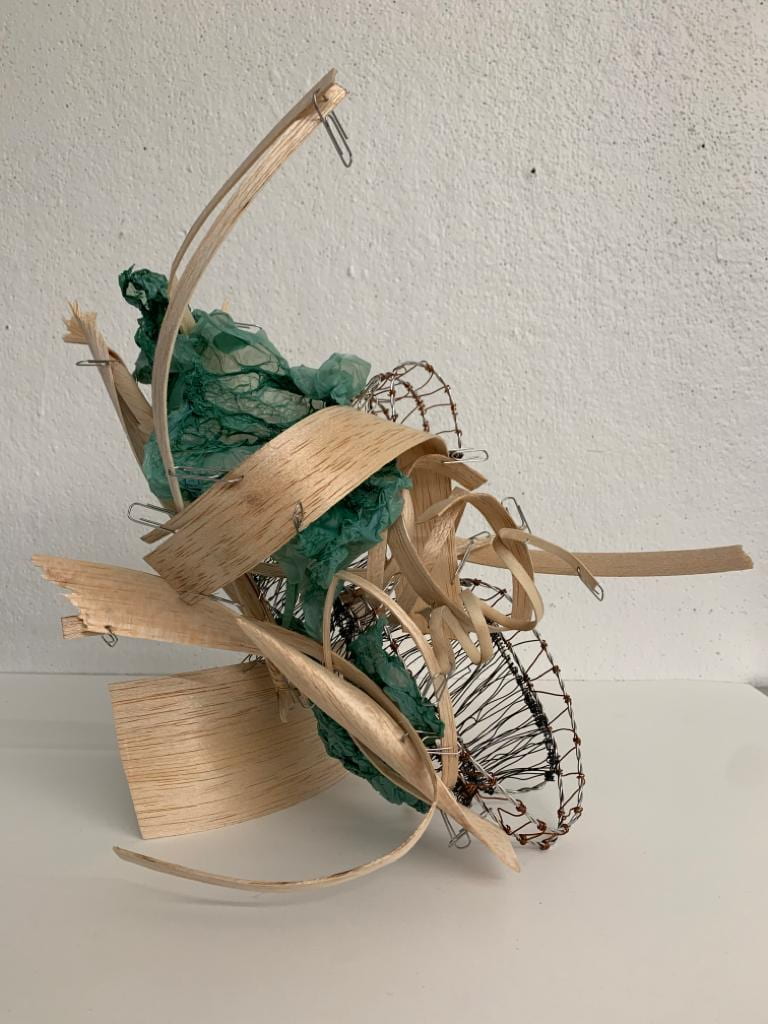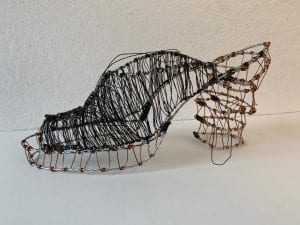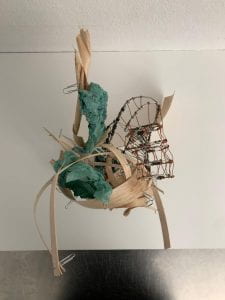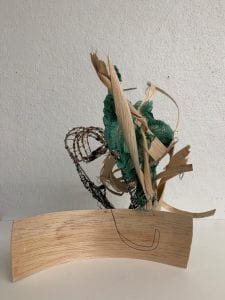The Wire Shoe Project was fairly intimidating in the beginning. I hadn’t really known how to manipulate wire and the idea that I had replicate a shoe in wire was incredibly daunting. The shoe that I picked for the project was of course, a heeled shoe, given that they’re all I ever wear.
The process of making the shoe was alright I suppose? There wasn’t really much joy that I took from it given that I tried to replicate the shoe to the best of my ability and wasn’t able to inject my creative input into the shoe. (Writing this post-critique, I see that I could have done the wire shoe in whatsoever way I please, just like some of my peers did, so long as it kept the resemblance to the shoe.)
The bit where I got together with my peers, or my clients, to discuss what we would want to see in the shoe was really helpful. We chose not to name a specific type of building so as to not stifle our creative processes and gave qualities that we would like to see in the addition instead.
The qualities which I chose to base my addition off of are – to use a transparent material, to make it lively, to not make it too heavy or appear too heavy, to make it abstract.
When thinking of building ideas, I was walking around Manhattan with scaffolding littered all over the borough. This reminded me of the stunning scaffolding in Hong Kong where bamboo is used instead of metal and fabric is used to hide the work from the elements and from public view.
Working off of the idea, I bought balsa wood and got biodegradable plastic bags from the university centre and began experimenting with the materials. I work better when an idea organically comes to me as opposed to planning something beforehand. The scans of the experiments are attached.
The project title of “Hong Kong’s scaffolding after WWIII” this came about with the haphazard manipulation I was doing to the materials.
Bending the wood into spirals and random shapes was the most labour intensive bit of the project; I had to soak the wood in water, clamp the wood down into the desired form without it completely breaking and I had to dry it with a heat gun to seal in. I wished it was that straightforward, but the wood would always spring back ever so slightly to its former shape and it would 4-5 goes for me to get to the desired shape
Putting the shoe and the addition together was my favourite bit of the project, since the theme of the project was something that was ‘post-apocalyptic’, I need not follow any sort of rules; after all, how orderly could scaffolding be after a World War? I chose paper clips as my form of mechanical joinery as it gives the piece a little motion, as opposed to something like sewing or brass fasteners.
I went into the critique really confident, in my poster and my shoe, and it turned out rather well too. The only semi-negative critique was that someone wished that my paper clips were manipulated like how the other components were. I do agree with that, it would have added an additional dimension to the work.
















